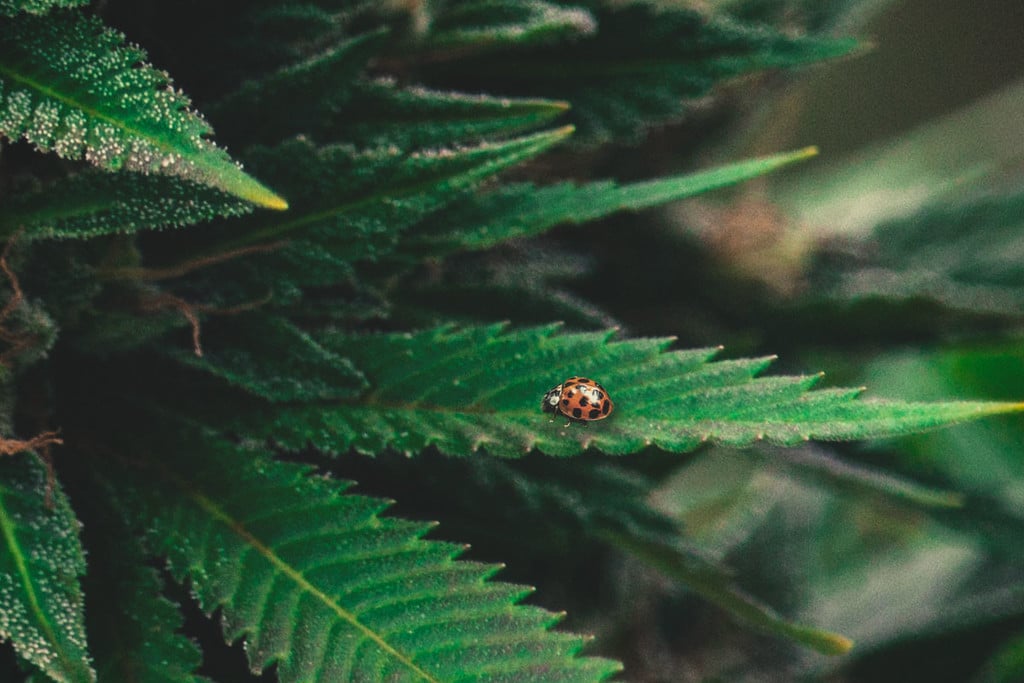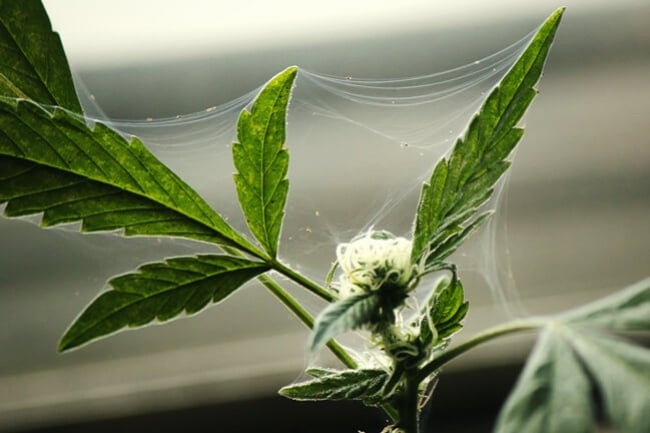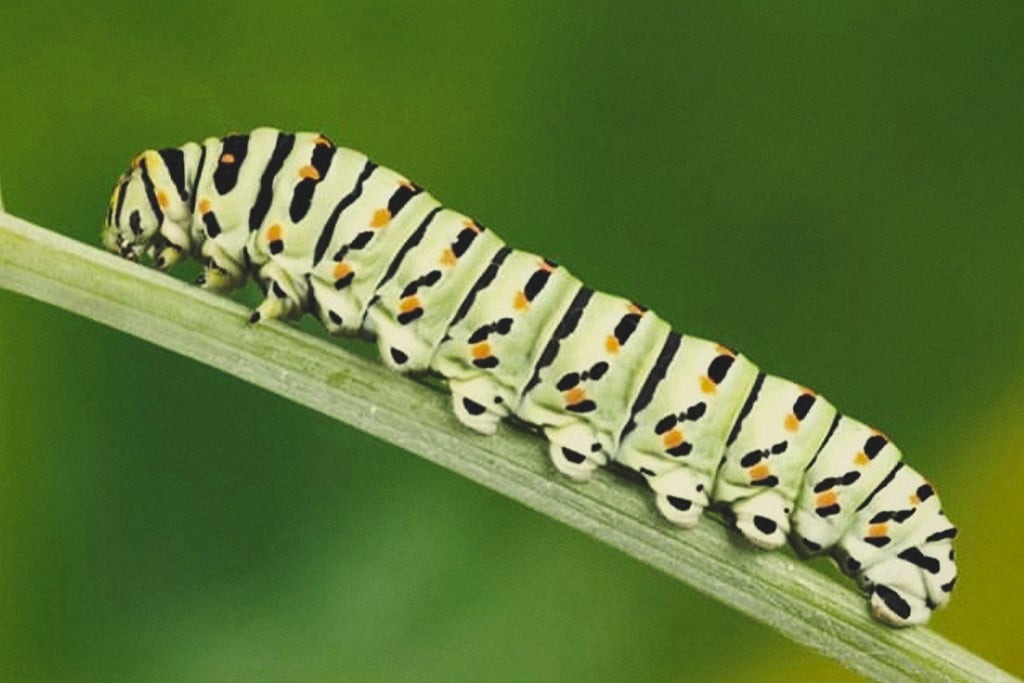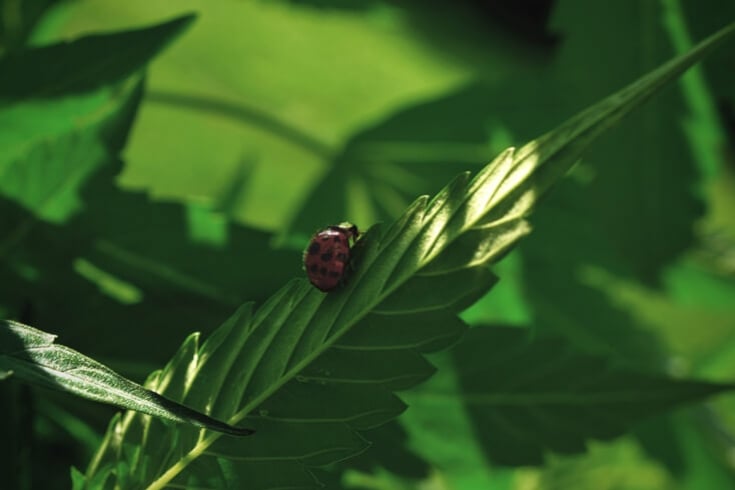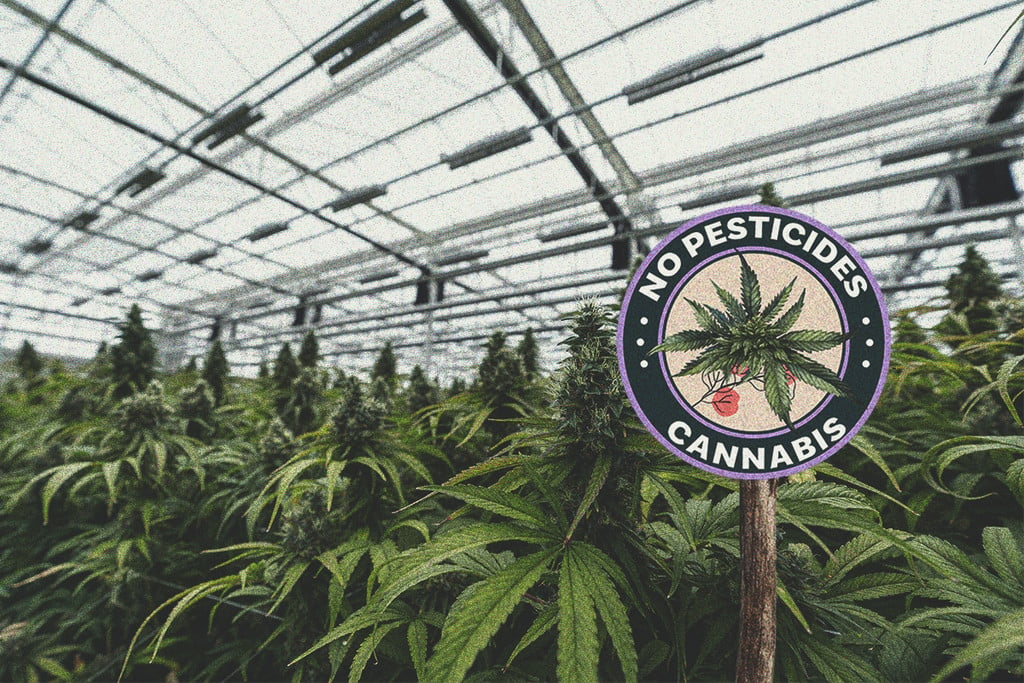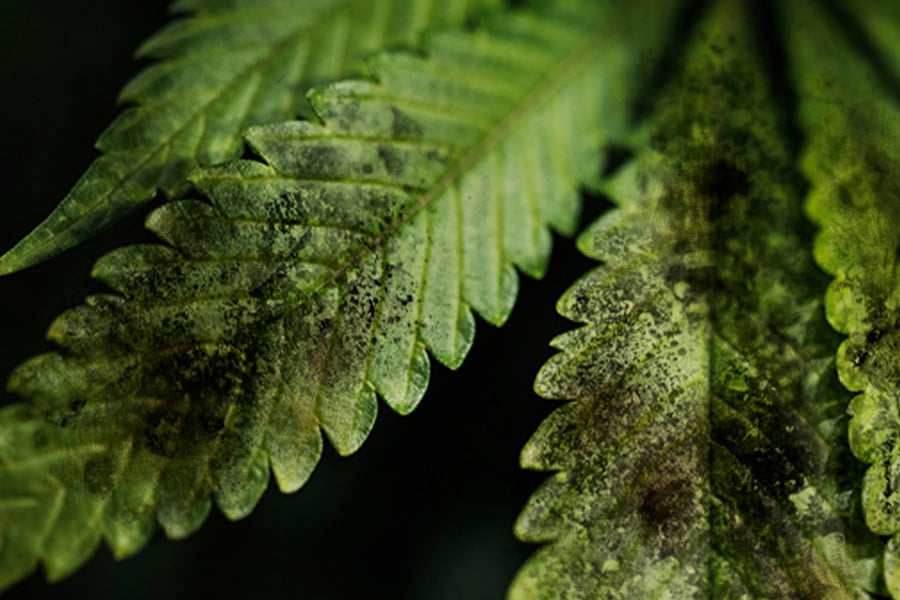.
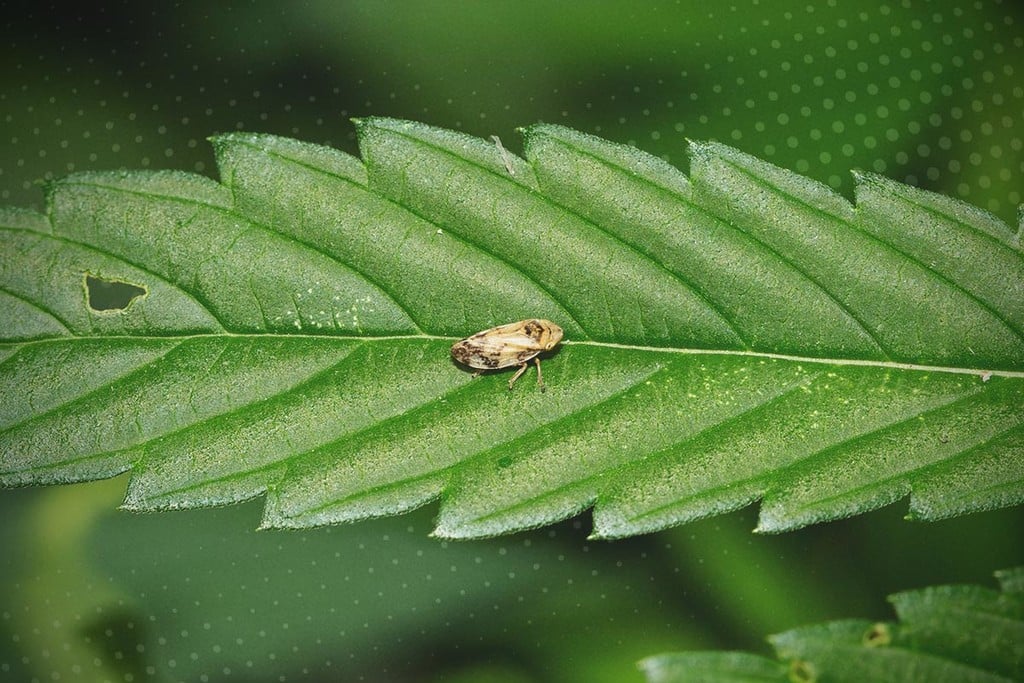
Cannabis and Leafhoppers: How to Identify and Treat
Leafhoppers are not a disaster if you find them hopping around on your cannabis plants—but it's still better not to have them. In this article, we delve into leafhoppers, and ask what you can do to eliminate them and potentially prevent them from inflicting damage in the first place.
Cannabis plants are desirable not just to humans, but to all manner of insects too.
In this article, we're examining what growers can do if they find leafhoppers on their cannabis plants. The good news is that leafhoppers are by no means a crisis, and finding a solution to the issue is likely to be simple!
Contents:
What Are Leafhoppers?
Leafhoppers are small and quite beautiful insects that can live and feed on cannabis plants.
There are over 20,000 individual species of leafhopper. In fact, leafhopper is the colloquial name for any member of the Cicadellidae family. Although they can appear quite different in some respects, there are similarities between most leafhopper species that should make them fairly easy to identify. More on this shortly.
They feed by sucking the sap out of leaves, and move around with the help of two long rear legs that can be used for jumping—or hopping. Leafhoppers begin life as nymphs, which then go through a partial metamorphosis in order to become adult leafhoppers.
What Do Leafhoppers Look Like?
Leafhoppers are very small but still quite visible to the naked eye. They come in a vast range of colourations and patterns, which are too diverse to mention here. However, there are similarities among the different species that can be used to identify them:
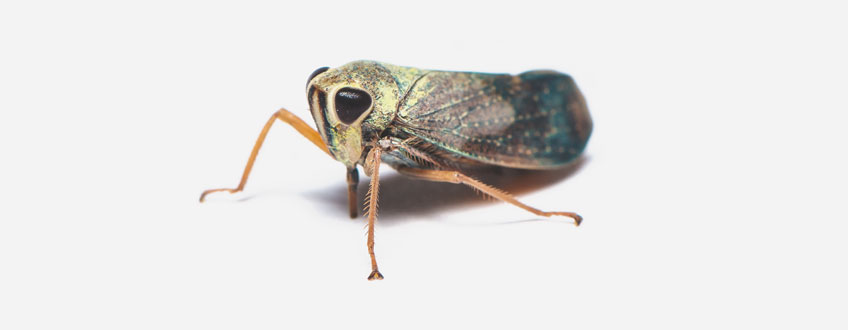
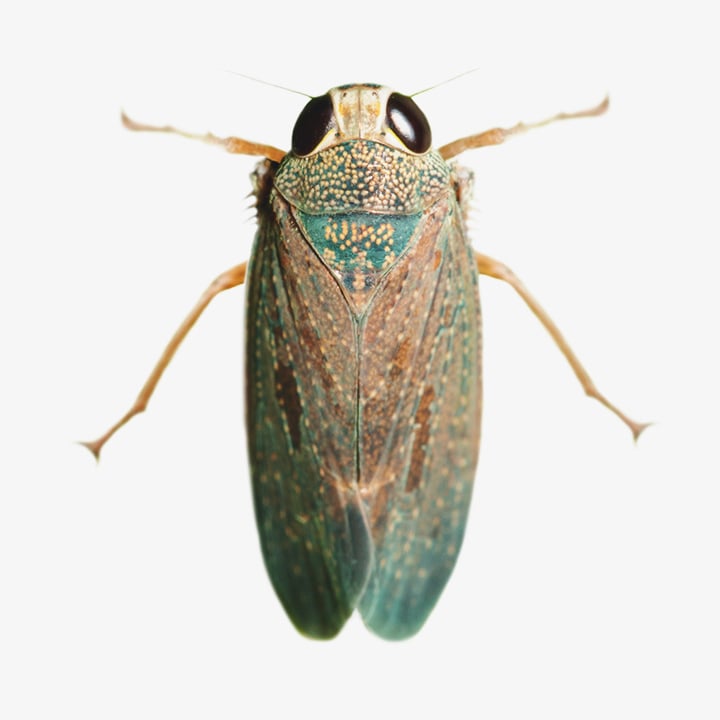
- Short antenna
- Two eyes at the top of the head
- Body is made of three segments
- Two wings that fold down the length of the body
- Six legs; the rear two can be hidden beneath the body
Leafhoppers vs Grasshoppers
Leafhoppers look and behave similarly to grasshoppers, but they are different.
Simply put, grasshoppers are significantly bigger than leafhoppers. This is the easiest way to distinguish them. A grasshopper can be a few centimetres long, whereas a leafhopper won’t get larger than one centimetre.
Moreover, grasshoppers can hop up to a metre, whereas leafhoppers can jump several centimetres and no more.
Signs of Leafhopper Damage on Cannabis Plants
Perhaps the biggest sign that you have a leafhopper infestation is if you spot them wandering around on your plants. Besides that, spotting their damage is another tell that you have a leafhopper problem.
Leafhoppers pierce the outer skin on cannabis leaves in order to suck away at the sap within. In doing this, they leave white and brown markings over the surfaces of leaves. It’s important to note that they do not make a hole through the leaf, but merely leave marks on the surface.
If leafhopper predation goes unchecked, leaf damage can become so great that foliage will yellow, brown, wilt, and sometimes even die and drop off.
Leafhoppers tend to appear when the weather is very dry and water is scarce. For this reason, take extra care to check the condition of your cannabis plants in periods of dryness.
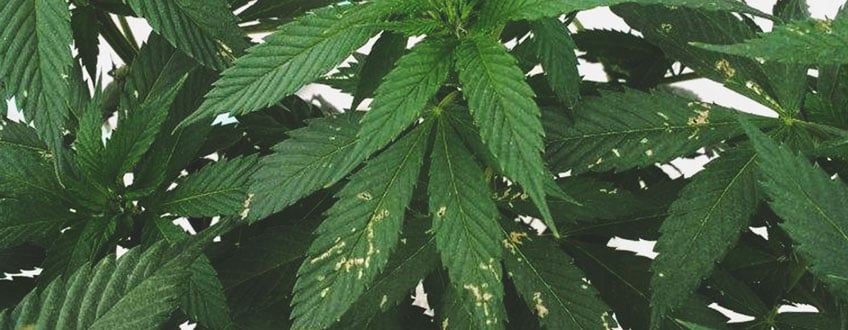
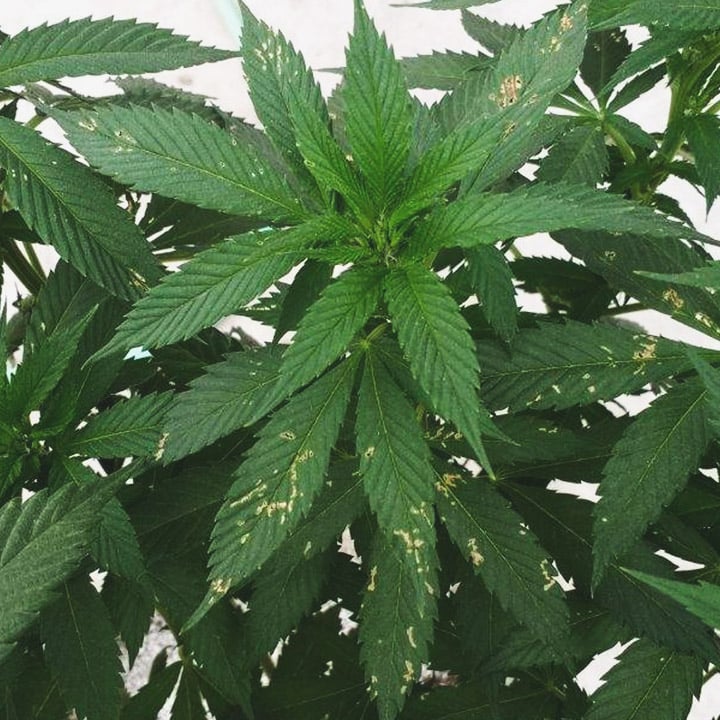
How to Treat Leafhoppers on Cannabis
The good news is that leafhoppers don’t pose a serious threat to cannabis cultivation. Even when they do appear, it’s usually not with enough force to overwhelm and destroy your grow. Plus, the damage they do is minimal compared to other pests. Nevertheless, you’ll still want to get rid of them.
There are a variety of available means when it comes to getting rid of leafhoppers, and none are particularly damaging nor difficult.
Note: leafhoppers will often hide on the underside of leaves, so apply all treatments here as well.
Spinosad
Spinosad is an organic insecticide that uses compounds found in the bacteria Saccharopolyspora spinosa.
This compound is great for small-scale, personal grows as it is highly toxic to leafhoppers but much less so to larger, beneficial insects. And it is considered totally safe for birds, pets, and humans. With a very short half-life, it breaks down entirely within 24 hours, meaning that you won’t have lingering insecticide on your plants or in your garden. As such, it does minimal damage to the wider environment.
Spinosad should be mixed with water and liberally sprayed onto affected plants using a misting bottle. It works most effectively when it is ingested by leafhoppers, where it goes on to affect their nervous systems.
Other creatures affected by spinosad are:
- Spider mites
- Caterpillars
- Thrips
Soap Spray
If you’re not a big fan of spinosad, or don’t want to buy it, then you might as well use an anti-leafhopper soap. This is effective in killing leafhoppers by weakening their outer shells. It also won’t do any harm to surrounding plants and animals.
Also, these soaps don’t leave much residue. However, see to it that you cover the entire area properly, as soap easily evaporates. Otherwise, you might find that it's not particularly effective.
Making a homemade leafhopper spray with soap is really easy. Simply mix around 10ml of dish soap with 1 litre of water, and it’s ready! These sprays work on contact with leafhoppers, so keep applying it as you see them.
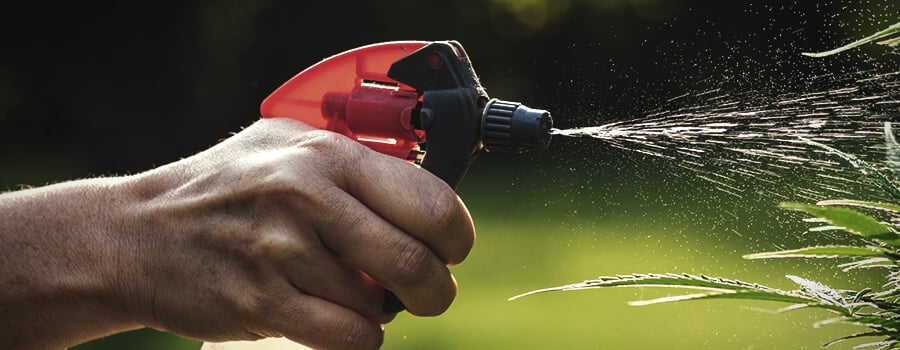
Neem Oil
Neem oil is another effective leafhopper killer, and it’s stronger than the others. This is why you should be more careful when using this. Another thing to note is that it leaves an unpleasant smell and taste on plants, so make sure you don’t accidentally spray other plants, or your cannabis buds!
Though safe if used properly, neem oil is thought to present some danger to humans and animals, even if not great. Therefore, you should use adequate protective equipment when using it, and ensure that children and pets stay away!
You need to use a misting bottle to apply this on your leafhopper-infested cannabis. Mix it thoroughly, as water and neem oil can easily separate.
Beneficial Insects
Not all bugs are bad for your weed garden. In fact, some are fierce allies that can help protect your crop. Ladybugs are one such specimen that you can release into your garden to wage war on a leafhopper infestation.
As part of their main diet, ladybugs will gladly eat the tiny monsters up. The sad part, though, is that ladybugs are likely to fly away in a day or two. Consider purchasing enough to do some serious damage to the leafhoppers for at least a week.
Other beneficial insects include:
- Lacewings
- Parasitoid wasps
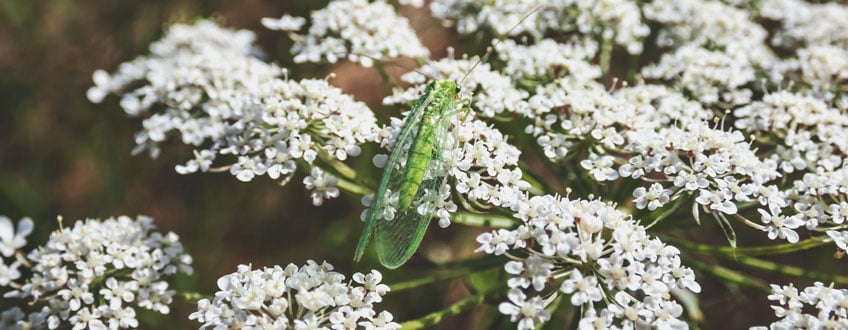
How to Prevent Leafhoppers on Cannabis
Although somewhat difficult, avoiding the arrival of leafhoppers in the first place can be a good way to prevent a problem altogether.
1. Floating Row Covers
If you’re on a tight budget, the best thing you can do is set up your own floating row covers. This might not be the most effective method, but it certainly is one of the most affordable. Floating row covers prevent insects and pests from crawling on your cannabis, without obscuring sunlight or restricting airflow.
In reality, though, leafhoppers don’t prevent enough of a risk to make this a particularly worthwhile option. This is a rare example where prevention may not be the best cure.
2. Companion Plants
Cultivating certain companion plants alongside your cannabis can give leafhoppers a tasty alternative if they get hungry. Though this won’t entirely remove the risk of them appearing on your cannabis plants, it does make it much less likely that a real leafhopper problem will arise.
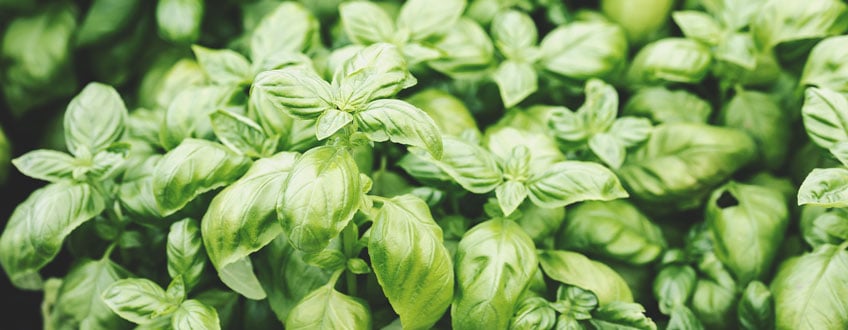
Are Leafhoppers Dangerous for Cannabis Plants?
In most instances, leafhoppers don’t present a genuine danger for cannabis plants. Nevertheless, they can cause damage and are far from desirable.
The good news is that at the first sign of leafhoppers or leafhopper damage, there’s no need to panic. Sometimes you may not need to do anything at all. They don’t hang around in the same way that other pests can. But if you notice a persistent presence or significant damage, then using one of the solutions mentioned above should quickly make the problem disappear.















































